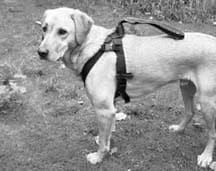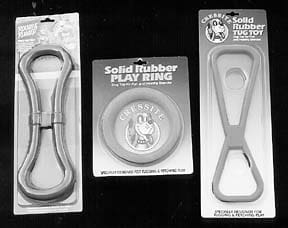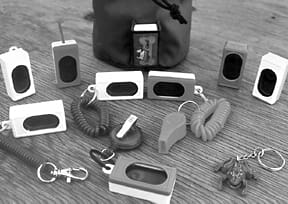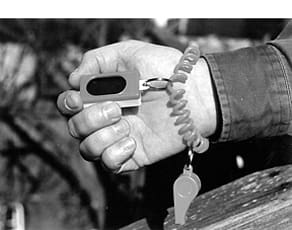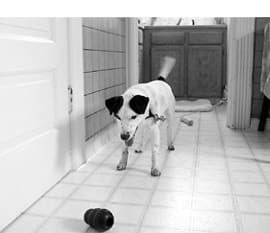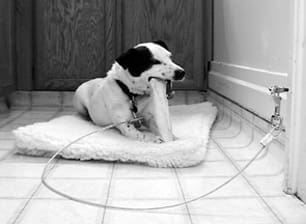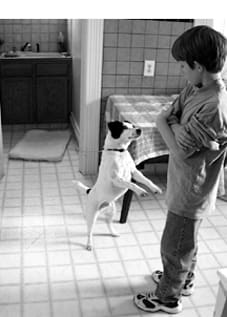Car rides. Some dogs love them. Some dogs hate them. Some dogs race from window to window, barking at every passing kid, cat, skateboarder, and bicyclist. Some dogs leave their breakfast on your new seat covers. Helping car anxiety in dogs, and getting a calm passenger is a step-by-step process.
Widget, from the time she was a tiny puppy, had trouble with car rides. When the Lowchen puppy was first brought into their home, she was covered with throw-up, said Nicole Dubus, Widget’s person.
It was really terrible, said Dubus. For the first three years of Widget’s life, almost every time she went into the car, she got seriously sick. This is an example of motion sickness due to extreme car anxiety.
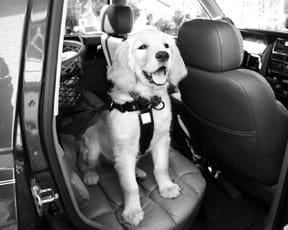
One time, we were all packed up to go to Yosemite, said Dubus, recalling the hours spent packing the car and the excitement she felt about the camping trip. We didn’t drive more than 20 minutes and Widget just kept throwing up and throwing up. Dubus said that they tried stopping and giving Widget some water, but the dog wouldn’t drink. She knew that if they kept going, Widget would get dehydrated. So they turned around, went home, and unpacked.
But today, Widget, who is now eight years old, has learned to ride without getting sick. Widget joins her people on around town travels, trips to the beach, and, yes, she can even handle long car rides and camping trips.
The reluctant rider
Carsickness, even extreme cases like Widget’s, is often the result of fear or discomfort. Why are some dogs afraid of cars? Here are the most common reasons:
• The dog sees the car as a big, bad scary monster. Dogs or puppies who haven’t been socialized to cars may be afraid of the noise of the engine, the feel of the car moving, or the sight of objects whizzing by outside the window. Plus, dogs are confined in a car. A dog that is already afraid may experience added stress from the sensation of being trapped within the scary moving monster.
• The dog knows the car will take him somewhere terrible. A dog whose main association with cars is trips to the vet, boarding kennel, or other unpleasant places quickly learns that cars equal bad things.
• The dog experiences physical discomfort. Some dogs (especially young dogs and puppies) have trouble balancing when the car moves from side to side. They may have trouble standing or suffer from motion sickness.
Five steps to a happy canine car passenger
Fear, bad associations, and physical discomfort often produce the same results hesitation to get into the car, carsickness, whining, or barking. Fortunately, you don’t have to know the cause of the problem to fix it. In fact, the road to a happy car trip may be just around the next corner.
Getting a dog used to riding in the car is a simple step-by-step process of desensitization and counter conditioning. As with any type of training, it’s easiest if you are able to start when your dog is a puppy, but even an adult dog can learn to love the car.
Your dog may fly through these steps in a few training sessions, or you may need a few sessions a day for several days or even weeks. But having a dog that enjoys the ride will be worth the time and effort. The key to a dog that is both physically and emotionally comfortable in the car is to take your time. Make sure your dog is happy at each step before moving on.
Step 1: Approaching the car
The first step is to help the dog feel safe around the car before you actually go out for a drive. Have your dog slowly approach the car. Some dogs will walk right up to the car without hesitation. If your dog happily walks to the car, Click! and treat. Then move him away and repeat a few times. This will teach him that going to the car is rewarding.
If he shows any hesitation or fear around the car, move as far away as you need to for your dog to be comfortable. Then start clicking and treating your dog for showing any interest in the car or for moving towards the car. If your dog is very nervous or afraid, walk in a large circle around the car. Gradually make the circle tighter, moving the dog closer to the car. Click! and treat for each step you take closer to the car.
Step 2: Getting in the car
Once your dog happily approaches the car, open the door and invite your dog to get in. Don’t force your dog into the car. Instead, make it his choice. You can encourage your dog by patting the seat or climbing in yourself and calling him to you. You may want to use a yummy treat to entice him into the car. Or, you can shape getting into the car by clicking and treating any movement towards the open door.
Once your dog gets into the car, sit next to him for a few moments. Leave the door open so that he doesn’t get worried about being confined. Then take him back out and repeat the process several times.
Step 3: Assigned seats
When your dog is happily jumping in and out of the car, it is time to help him learn where he will sit. Assigning your dog a place in the car can help him feel safer and know what you expect of him on car rides.
If you use a crate (and your dog is crate-trained), you can invite him into the crate. If you use a harness or another restraint system, or if you have your dog stay in the back of your car behind a barrier, you may want to place a towel or blanket in your dog’s “spot.”
Call your dog into the car, have him now go to his spot, and hang out together for a few minutes with the car door closed. Give your dog lots of praise, or Click! and treat him for hanging out calmly in his spot.
If you use a harness or restraint system, you can buckle your dog in. Click! and give him a treat for accepting the harness and sitting calmly in his spot. (If your dog is new to the harness, you’ll need to spend some time away from the car training your dog to the harness.)
Step 4: Start your engines
Once your dog happily jumps into the car, goes to his spot, and is comfortable with the door closed, you can move into the driver’s seat. Click! and treat your dog for remaining calm in his spot. Then start your engine. Let the engine run for a minute or two while you Click! and treat your dog for remaining calm.
If your dog is in a crate or behind a barrier, give him a chew bone or a Kong toy stuffed with something yummy to encourage him to stay calm.
After a minute or two, stop the engine and take your dog out of the car. Repeat this process several times until your dog is completely comfortable with the engine running.
Note: If your dog is prone to carsickness and you have just given him a bunch of treats while working through the first four steps, you may want to wait for another day to continue with step five. A belly full of treats may contribute to carsick problems!
Step 5: Start with short drives
Once your dog will happily get into the car, knows where to sit, and is comfortable with the engine running, it is time to actually go for a ride! Start with very short rides to happy places, such as the dog park.
For a dog that gets carsick, think about how far you have been able to drive in the past before your dog vomits, then drive less than that distance. For some dogs, you may need to start with only driving a half of a block. When your dog can go a half of a block without getting sick or upset, increase the distance to a full block. Gradually increase the length of your rides until you can take a short trip to the park or another fun dog place. When you stop the car (even if you’ve only gone a half of a block), get out and engage in a rewarding activity such as a walk or ball play.
While you are desensitizing your dog to the car, always make the rides end with fun activities. Avoid vet visits and trips to the kennel or groomer while you are working through this process.
More about motion sickness
For most dogs, the desensitization process will take care of carsickness, as long as you take it slowly. For some dogs, especially young dogs that may still be wobbly on their legs, confining them to a crate may help. The flower essence known as Rescue Remedy (or, depending on the maker, Five Flower Remedy or Calming Essence) may help calm a nervous dog, and cooled peppermint tea may help soothe his tummy. In addition, make sure that your dog has gone to the bathroom and that you have opened the windows a little for fresh air. Being too hungry or too full may also contribute to carsickness.
If your dog still has trouble with motion sickness after desensitizing him to the car, you may want to talk to your veterinarian. A physical problem may affect your dog’s balance and his ability to ride comfortably in a car.
Car manners
Dogs need good car manners for safety and the sanity of the driver. Because it’s pretty darned difficult to actively train while driving, the best solution to behavior problems in cars is prevention and management.
The most common behavior problems arise from dogs moving about the car freely. Running from window to window, barking as dogs or bikes go by, stepping on the driver, trying to climb out windows all of these behaviors can only be accomplished by a dog that is moving freely. In addition, a dog moving freely can create safety hazards and can be disastrous if you get into an accident. Having your dog in a crate or safety restraint is both more safe and more sane.
Dogs should also be taught not to jump from the car without your permission.
The open road
Once your dog has learned to love the car ride and mind his manners in the process you can set out for many adventures together. You can explore new areas in your city or town, take driving vacations, or head out for a serious road trip. You, your dog, and the open road. What more could you want?
Also With This Article
Click here to view “Car Safety For Canines”
-By Mardi Richmond
Mardi Richmond teaches Agility for Fun classes in Santa Cruz, California, and is the co-author of Ruffing It: The Complete Guide to Camping with Dogs.



